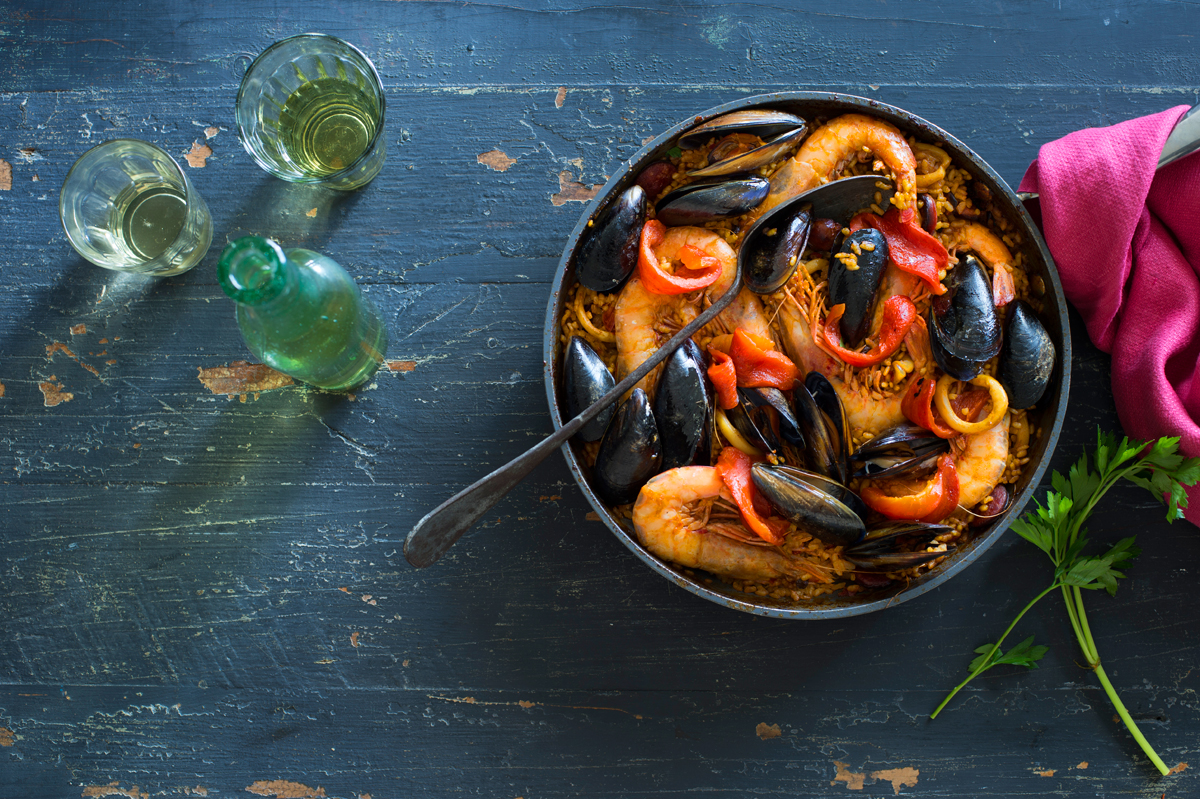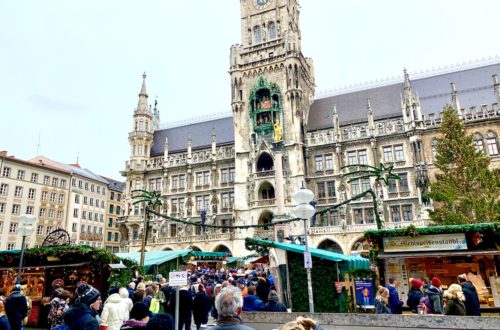
Dietitian Abroad: South Korea Edition
This year my husband and I had the opportunity to travel to South Korea to visit some friends living and working abroad in Seoul. This was my first trip to Asia! In general, I’d describe Korean cuisine as a bit tangy, definitely salty, and slightly perplexing.. Some things I loved and wished they were easier to find in Denver… other things I had a hard time wrapping my mind around. In the end – I tried it all!
Korean Staples
South Korean staples are best summarized as rice, vegetables and meat, with a side of Kimchi (a side dish made from fermented cabbage, salt, red chili paste, and garlic). Most traditional dishes are some combination of stables, with altered plating, temperature, spices, and side dishes. Other common ingredients include bean sprouts/mung bean, soy bean, buckwheat noodles, seafoods, and various types of seeds.
Above – pickled bean sprouts, spiced chive, pork “bulgogi”, salted-fermented shrimp, pickled pine nuts, something yellow?, kimchi, miso soup, and white rice. Bulgogi is made of thin, marinated slices of beef or pork, grilled on a barbecue or on a stove-top griddle. Learn more about Bulgogi.
Above – pork bibimbap, fish broth, pickled burdock root, kimchi, and a chili-garlic sauce. Bibimbap, translated to “mixed rice with meat and assorted vegetables”, has been a national favorite since the Joseon Dynasty (~1400 AD). Bibimbap can be served in a metal mixing bowl, or in a hot stone bowl, depending on preference or time of year. Read more about bibimbap.
Above – traditional Jeonju veggie bibimbap, corn slaw, seasoned crab in their shell, pine nuts, seasoned lettuce, seasoned chive, kimchi, kimchi soup, and bean sprout soup. Jeonju, a smaller city in south-west Korea, is considered the home of this famous dish. Read more about bibimbap’s roots in Jeonju.
Above – traditional moju makgeolli (rice wine) served in a kettle with all the fixings — steamed clams, pork knuckles, fish fillet, mussels, omelet, chili-garlic pork brisket, and a potato pancake. Take note – don’t eat dinner before you come to a rice wine bar!
Explore the gallery for more traditional foods —
The Market
Take a stroll through a traditional Korean Market and you can find just about anything you need to make a good meal — and more.
Korean red chili (called gochugaru), garlic, and salt are used in just about every traditional dish. Koreans like it HOT HOT HOT!
These little guys were waiting to be adopted into a good home 🙂
Koreans love their side dishes (called banchan). Most are seasoned and fermented in red chili, salt, and garlic. Shoppers will often purchase a variety of sides to serve at home throughout the week. Learn more about the many Korea side dishes.
Explore the gallery for more photos from the market —
Korean BBQ
What is a trip to Korea without sampling a traditional, table-top barbecue! Korean BBQ is tasty, fun, and a great way to spend a Saturday socializing with friends.

Pork Belly (or Sam gyeob sal) is probably the most common cut of meat, followed by marinated beef, then chicken. But fear not my vegetarian friends, there is plenty of onions, mushrooms, peppers, and tofu (by request) to leave you satisfied at the grill.
Cooking Class in Seoul
To better understand Korean culture (and learn to make tasty dishes at home) we booked a personal cooking class with a native Korean. Our chief, Jomin, lead us through the market to shop for supplies, then brought us to her home – turned cooking studio, to prepare a traditional meal.
Do we look like professional chefs, yet?
In our two-hour course, our instructor Jomin, taught us to make Kimchi Jigae (kimchi stew), Japchae (stir fried glass noodles with vegetables), and Jeyuk Bokkeum (spicy fried pork).
Explore the gallery for more images from our cooking class —
You can book your own cooking class with Jomin, here!
Jeonju Street Food
Considered the culinary capital of South Korea, Jeonju offers a variety of unique and tasty street foods. One evening, we roamed the cobble streets of the old Hanok Village, eating our way through Jeonju.
Above -fried cheese on a stick with mango and sweet chili dipping sauce.
Above – skewered grilled shrimp and octopus in a sweet tomato sauce (sort a cross between ketchup and mayo).
Explore the gallery to learn more about Jeonju street foods —
Western-Inspired Treats
Despite the reputation of Asian diets as healthy, low-fat, and fresh — almost every western favorite can be found in South Korea. While heavy US military presence may be in-part to blame, Koreans just love western culture – movies, clothing, and especially food.
Grap-and-go style ice cream can be found at almost any corner store. Crunky is sort of like a Nestle Drumstick — this one green tea flavored.
From to L-R. Sweet & Spicy flavored chips – similar to Doritos, Korean Soju (pomegranate and grape flavor), caramel bar, banana- marshmallow cookies covered in chocolate, and green-tea kit-kats.
Lavender Cafe Breve and Orange Dark Mocha at Korea’s 1000th Starbucks.
French Macarons filled with ice cream! #OnlyinKorea
Bingsu – Korean shaved ice that melts in your mouth, just like cream. This summer dessert is super popular in South Korea right now. It’s sweet, delicious, light on calories, and sold just about everywhere across the country. Read more about Bingsu.
Overall, I loved all the fresh veggies, lean meats, and steamed rice served with every meal. I think I could have done without some of the funky seafood stuff (like pickled crab in it’s shell) and I’m not a super fan of kimchee, but i’d never pass up the opportunity to try to new food.
Until my next adventure!










































